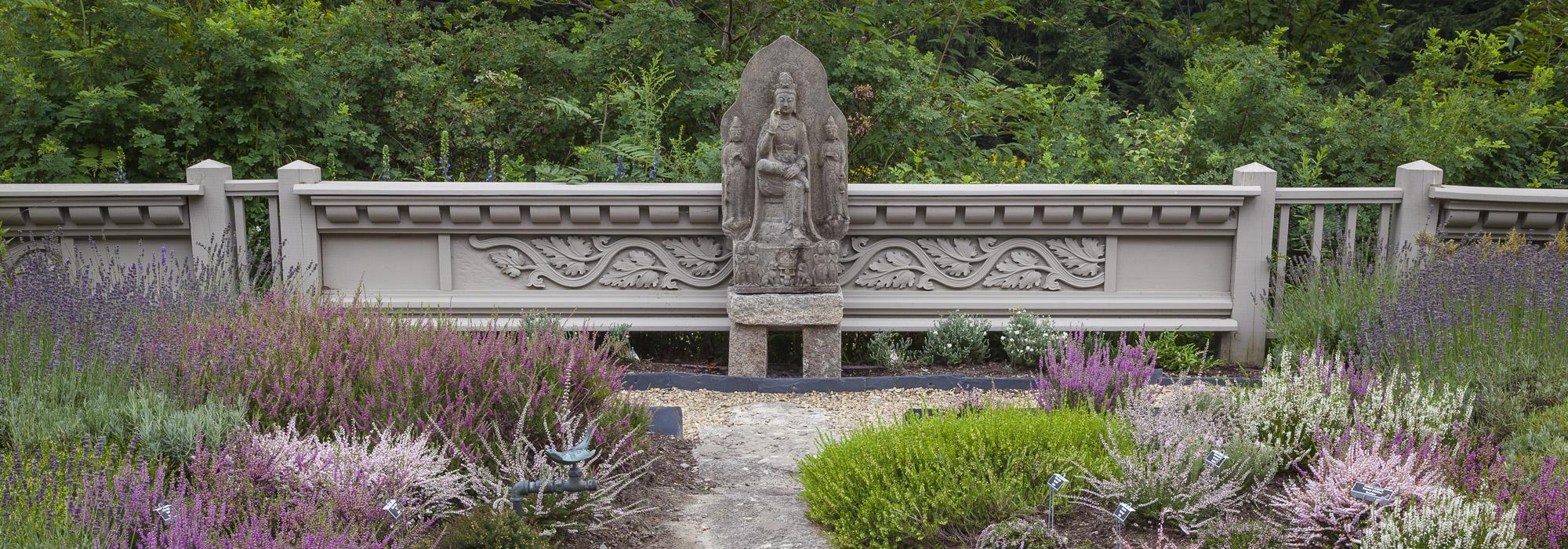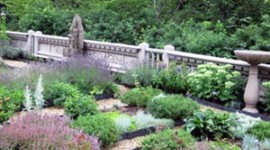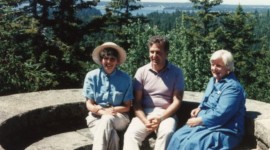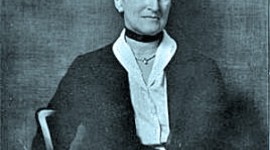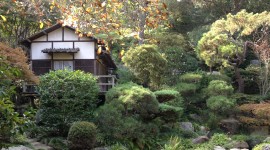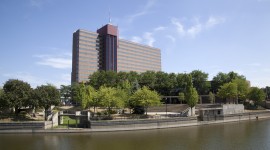SAVED: Beatrix Farrand’s Garland Farm
The rehabilitation of the Entrance Garden at Garland Farm in Bar Harbor, Maine, is entering its final phase. The project is part of a larger effort to renew the landscape to reflect the design of pre-eminent landscape architect Beatrix Farrand, who resided at the 4.9-acre farm, her last home, from 1955 until her death in 1959. The cottage-style four-season gardens are a significant example of her work and bring together key elements that Farrand favored, including intimacy, sophisticated plantings, and appropriateness for a domestic dwelling. The current work follows on an earlier project to rehabilitate the Terrace Garden, another important component of Farrand’s design.
Led by botanist Brenda Les, the Entrance Garden rehabilitation focuses on the design and replacement of the landscape’s historic plants in accord with Farrand’s original 1957 Entrance Garden Plan. The plan (shown below) is a sketch of a rectilinear plot consisting of two gardens—one Asian-inspired and the other with native plantings. This second phase of work began with extensive repairs to the Farrand-Wing building, rehabilitation of the historic fence, and the resetting of the lichen-covered stepping stones forming the paths through the garden. The pruning of boxwoods and rhododendrons, and the removal of ahistorical plant materials led to the discovery of an original lettered stone buried near the entrance. The current effort has also reintroduced violets near Farrand’s stone bench, as well as bergenia, iberis, blue-green dwarf iris foliage, white cranesbill, and dianthus.
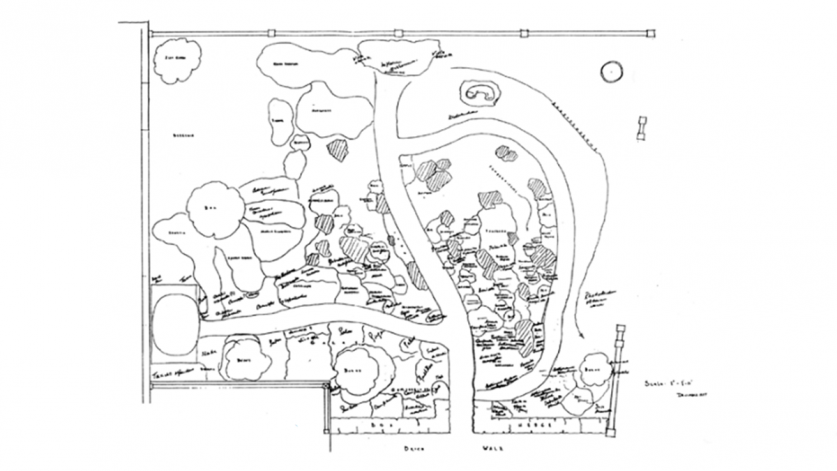
In 2003, when the Beatrix Farrand Society acquired the Garland Farm from its last private owner, the overall character of the garden had begun to deteriorate. One of the Society’s primary goals was to rehabilitate the gardens as an example of one of Farrand’s most intimate designs. In 2007 the Society commissioned a Cultural Landscape Report from the Cambridge landscape architecture firm Pressley Associates, which undertook a detailed site history, assessment of integrity and significance, a detailed plant inventory, and treatment recommendations. The first phase of the work dealt with the Terrace Garden and began in 2007. Using Mary Alice Roche’s detailed 1962 planting plan of the Terrace Garden (published in Flower Grower: The Home Garden Magazine), as well as a copy of Newcomb’s Wildflower Guide for reference, the work continued from 2008 to 2012. The Holding Garden, to the northwest of the grounds, was designated to hold the plant stock for the historic cottage gardens while the greenhouse (ca.1957) was rehabilitated.
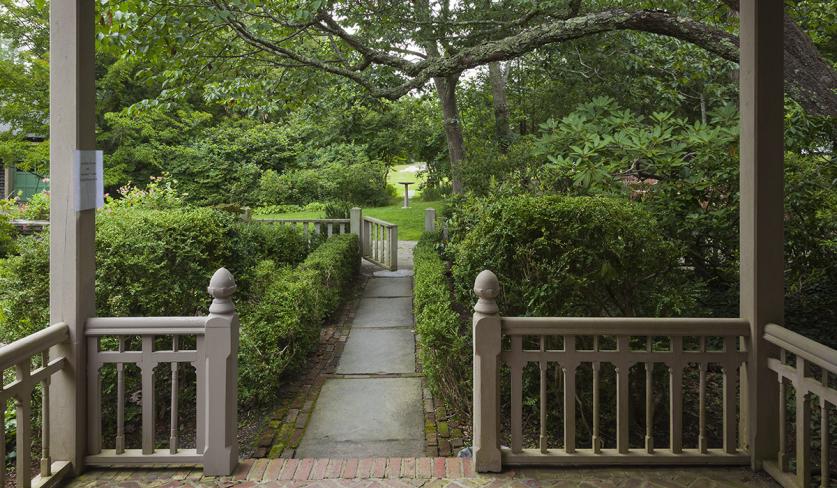
Initially, the ancestral home of Lewis Garland, Farrand’s property manager in Reef Point, Garland Farm features an addition by architect Robert W. Patterson— which reuses many elements from Farrand’s Reef Point home. Patterson’s addition, situated between the old farmhouse to the east and the barn and greenhouse to the west, is flanked by two small gardens. The Terrace Garden, to the south, is surrounded by a salvaged decorative wooden fence and is divided into two rectangular parterres. The Entrance Garden, situated to the north, features two small plots bisected by a central boxwood-lined walkway. The western plot featured Asian shrubs and native groundcovers arranged around a giant cypress tree. Meandering paths lead to a Chinese stoneware basin and a low granite bench. The eastern plot contains rhododendrons around the base of a Sargent Cherry Tree.
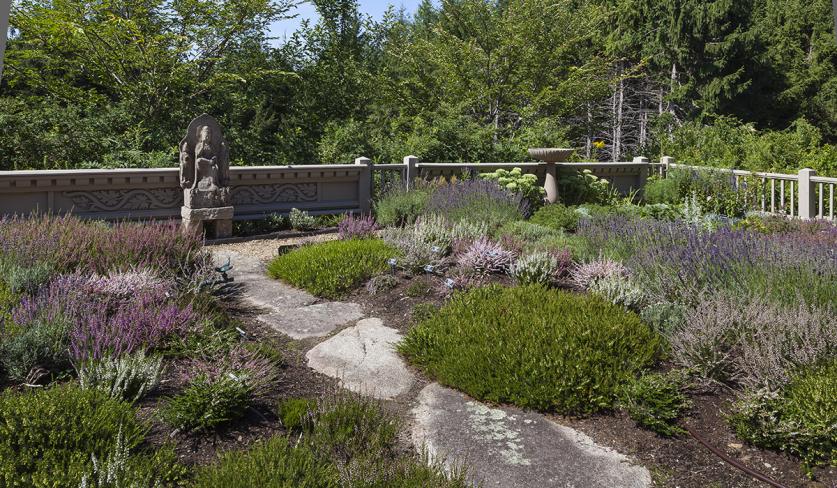
Farrand, who referred to herself as a “landscape gardener,” was one of America’s most significant practitioners from the 1890s through the early 1940s. She studied horticulture with Charles Sprague Sargent, founder of the Arnold Arboretum, and learned about landscape design from her extensive travels in America and Europe. Farrand was renowned for designing private estate gardens and was a founding member of the American Society of Landscape Architects in 1899. TCLF enrolled the Garland Farm in its Landslide program in 2012 after being alerted to a shortage of funds needed for the Entrance Garden project. Interested parties can help fund educational initiatives and stewardship efforts by making a donation. To make a donation or find out more about the Society’s goals, resources, and accomplishments, visit www.beatrixfarrandsociety.org.



